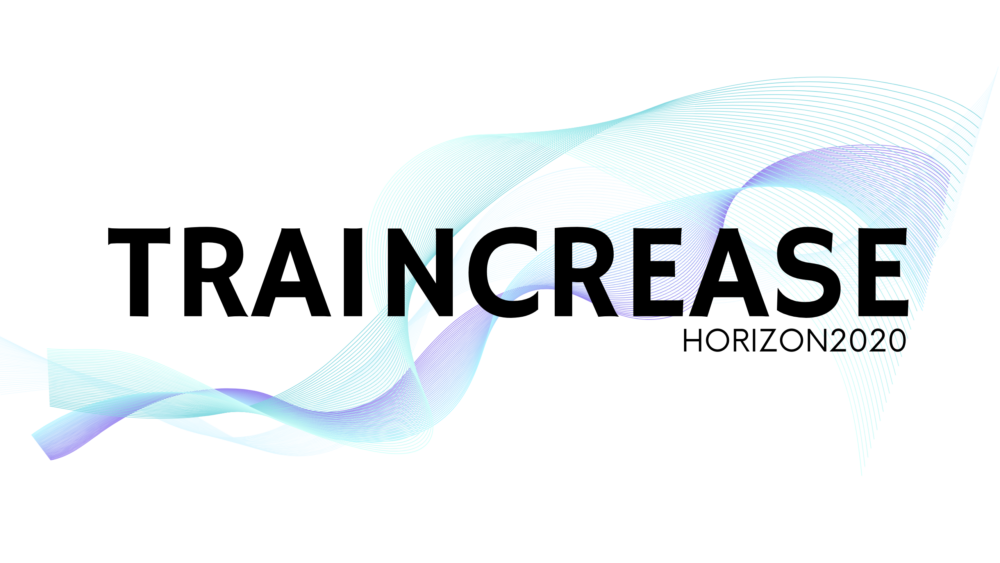Lectures
Prof. Charles Webber "Detecting and Diagnosing Deterministic Language Patterns in Dynamical Systems Across Disciplines"
Charles L. Webber, Jr.
(Loyola University Chicago, Physiology)
Recurrence plots were first introduced in the context of the Hénon map (1987) and Lorentz equations (1992). But early on it became apparent that physiological processes like breathing (1994) and fatiguing muscles (1995) were amenable to this new methodology on living, dynamical systems. As the years have passed recurrence plots and their quantifications have found utility for diagnosing various systems over multiple disciplines. Why might this be the case? We posit that the popularity and success of recurrence analyses across disciplines are attributable to the common denominator of dynamical motions being present in everything. Animate and inanimate systems both wiggle in time and/or space. Parallel to the mathematical world of scalars and vectors, the paradigm of language becomes an intuitive and useful tool for explaining recurrences in terms of categorical letters and words.
In this study we demonstrate how systems speak and produce language as it were. Any detected changes in the speech reveal system states changes, some of which may be pathologic or disintegrating. Numeric data from many example systems were partitioned into 26 bins corresponding to the 26 letters in the English alphabet. Bin counts were rank-ordered and paired with decrementing letter frequencies statistically derived from almost 744 billion recurring English words (about 98 thousand distinct words) in the Google books Ngrams data base. The output stream of letters was interrupted with spaces to form (unintelligible) words according to the asymmetric (right-skewed) distribution of regular English word lengths (1 to 12 letters long). Information in these linguistic structures were studied by recurrence plots and recurrence quantifications at the orthographic and word levels (RADIUS = 0; EMBED = 1 to 20). For most systems, save random ones, shuffling of the native sequences destroyed the inherent information content of the original data (decreased DETERM).
Two pedagogical lessons stand out from this work: 1) most dynamical systems speak with meaningful contents that point to underlying deterministic rules; and 2) recurrence quantification analysis is a powerful linguistic tool irrespective of the scientific discipline employing it.
____________
Charles Webber, one of the creators of Recurrence Quantification Analysis, is a propagator of the nonlinear methodology which is applicable to multiple branches of science. RQA has demonstrated broad appeal because of its mathematical simplicity in linking any dynamical system in time and space to graphical and numerical entities that are sensitive to state changes. Dr. Webber is Professor Emeritus, Cell and Molecular Physiology, Health Sciences Campus, Loyola University Chicago.
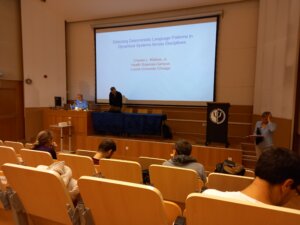
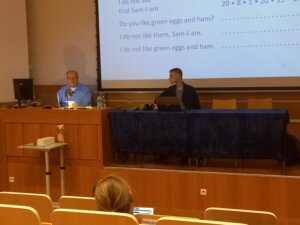
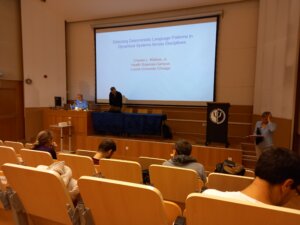
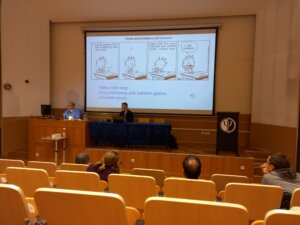
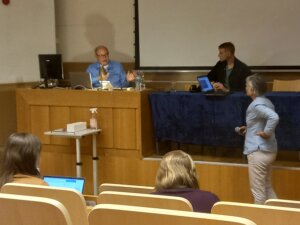
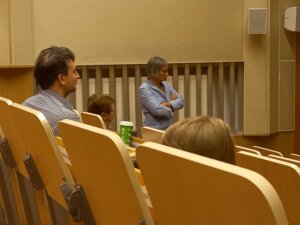
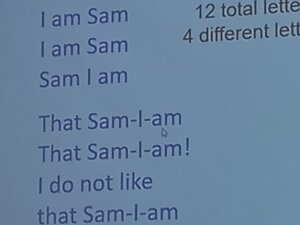
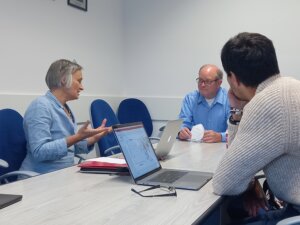
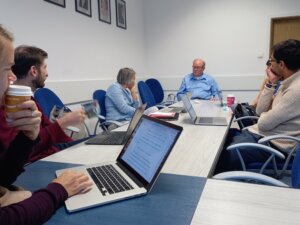
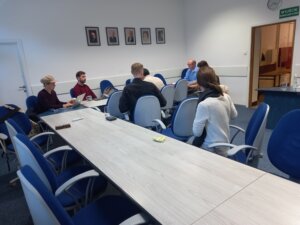
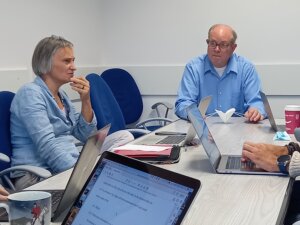
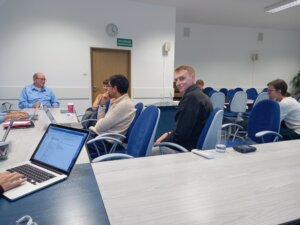
Dr Bartosz Mroczkowski "Thinking (in) Movement or Materialization of Meaning "
[See the event page: https://fb.me/e/2CeyUzRvY]
- Mark Johnson, Znaczenie ciała. Estetyka rozumienia ludzkiego, Lódź: Wydawnictwo Uniwersytetu Łódzkiego, 2015, [Wprowadzenie: s. 19-34, Rozdział I: s. 35-50]. [PDF]
- Bartosz Mroczkowski, Konceptualizacje i praktyki ciała w perspektywie posthumanizmu i nowego materializmu, [“Życie i mowa”, s. 32-37, “Taniec kontakt improwizacja — punkt kontaktu z innymi”, s. 225-242]. [PDF]
Prof. Anne Fausto-Sterling “Gender/sex identity formation during infancy”
By the age of three many children feel that they are a boy or a girl (gender/sex identity). They prefer specific play objects and modes, clothing, and colors that reflect this feeling and also reinforce it. Most work to date employs cognitive and/or social learning analyses to establish the age at which (when) a child can self-identify or when surrounding adults can use the child’s preferences to apply the label of boy or girl. A consensus has formed that features of gender/sex identity, as defined by behaviors and self labelling, emerge after 18 months of development and elaborate and consolidate by 5 years of age. In this talk we address theoretical and investigatory limits of this analysis. We argue that the question of how precedes that of when, proposing that during the first 18 months, gender/sex develops as a presymbolic, neuro-sensorily embodied phenomenon. We further suggest that, rather than being examined as a topic apart, the study of gender/sex be integrated into its intersectional context as an aspect of human culture, as currently investigated in research groups such as HILL.
Before the meeting, please read this paper:
Fausto-Sterling, Anne. (2019) “Gender/Sex, Sexual Orientation, and Identity Are in the Body: How Did They Get There?”. The Journal of Sex Research 56(4-5), pp. 1-27. [ResearchGate]
Further reading:
- Fausto-Sterling, A. (2020). A Dynamic Systems Framework for Gender/Sex Development: From Sensory Input in Infancy to Subjective Certainty in Toddlerhood.Frontiers in Human Neuroscience. April 9, 2021. [Frontiers in Human Neuroscience]
- Sung, J., Fausto-Sterling, A., García Coll, C. & Seifer, R. (2013). The Dynamics of Age and Sex in the Development of Mother–Infant Vocal Communication Between 3 and 11 Months. Infancy, 18, 1-24. [PDF]
Dr Damian Kelty-Stephen “Social experience as embodied interactivity, cascading across but also within organisms”
Dr. Damian Kelty-Stephen is an assistant professor in the Psychology Department at The State University of New York-New Paltz. He’s mostly interested in how the movement supports our perception of the (outer) world.
To read more about his research themes, please visit his website: https://sites.google.com/site/foovian/.
Abstract
Social experience is an embodied coordination amongst multiple organisms in a shared context. Whether within or across bodies, this coordination unfolds as a cascade, exhibiting nonlinear interactions across multiple nested spatial and temporal scales. Theoretically, cross-scale interactions align with the intersectionality of social constructs and identity. Practically, multifractal descriptors of cascade-driven nonlinearity predict psychological outcomes in how we relate to our context. Network modeling is effective for detailing the interactivity of qualitatively different, observer-coded behaviors when that context spans a group of actors. However, network modeling shows that even single bodies enact group-like coordinations: bodily degrees of freedom share and exchange multifractal nonlinearity in support of a perceptual/cognitive task. After all, social interactions are not simply the trading of qualitatively different behaviors in a linear framework where effects are sums of constituent parts. Their support for the growth and emergence of new social symbols/constructs (e.g., gender) suggests a deeper wellspring of nonlinearly creative tensions. Network models populated with multifractal descriptors of more continuously measured movement could light the way to some fascinating possibilities. For instance, the diversity and fluidity of socially constructed experience could rest more deeply on the multi-body extension of cascades in single-body movement.
Before the meeting, please read this paper:
Eason, E. G., Carver, N. S., Kelty-Stephen, D. G., & Fausto-Sterling, A. (2020). Using Vector Autoregression Modeling to Reveal Bidirectional Relationships in Gender/Sex-Related Interactions in Mother-Infant Dyads. Frontiers in psychology, 11, 1507. DOI: fpsyg.2020.01507
For further reading, please see:
- Kelty-Stephen, DG. (2017). Threading a multifractal social psychology through within-organism coordination to within-group interactions: A tale of coordination in three acts. Chaos, Solitons & Fractals, 104, p. 363-370. DOI: 10.1016/j.chaos.2017.08.037.
LINK: [Science Direct] - Bloomfield, L., Lane, E., Mangalam, M. & Kelty-Stephen, DG. (2021). Perceiving and remembering speech depend on multifractal nonlinearity in movements producing and exploring speech. Journal of The Royal Society Interface. DOI: 10.1098/rsif.2021.0272
- Booth, Ch.R., Brown, H.L., Eason, EG., Wallot, S. & Kelty-Stephen, DG. (2018). Expectations on Hierarchical Scales of Discourse: Multifractality Predicts Both Short- and Long-Range Effects of Violating Gender Expectations in Text Reading, Discourse Processes, 55:1, 12-30. DOI: 10.1080/0163853X.2016.1197811
